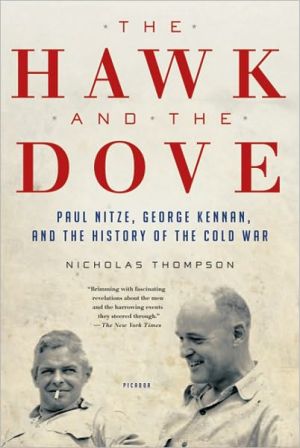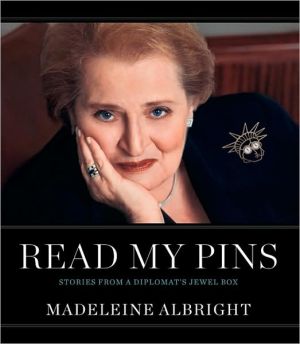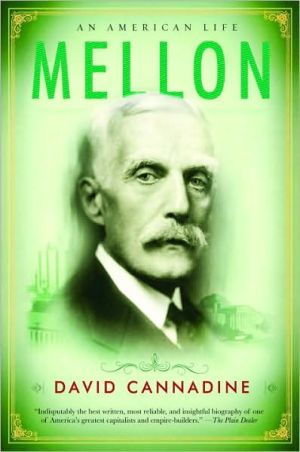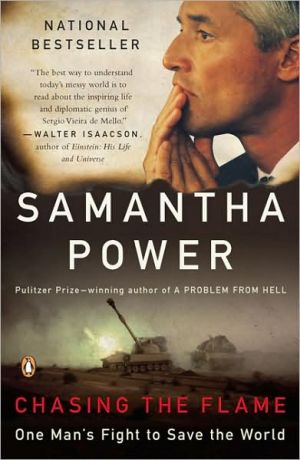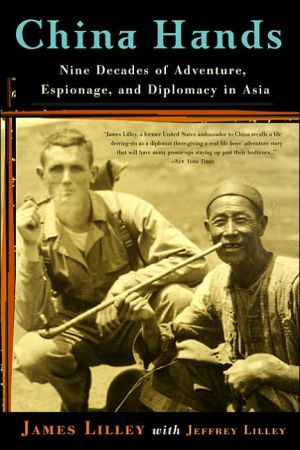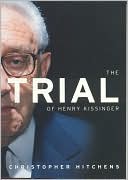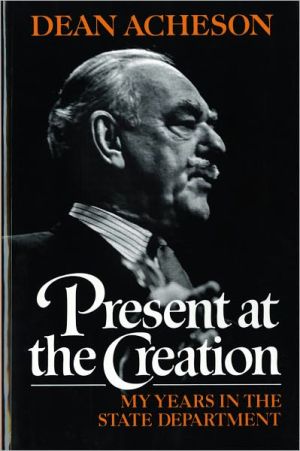The Hawk and the Dove: Paul Nitze, George Kennan, and the History of the Cold War
Only Two Americans Held Positions of Great Influence throughout the Cold War. The two men embodied opposing strategies for winning the conflict. Yet they dined together, attended the weddings of each other's children, and remained lifelong friends. Paul Nitze was a consummate insider who believed the best way to avoid a nuclear clash was to prepare to win one. George Kennan was a diplomat turned academic whose famous "X article" persuasively argued that we should contain the Soviet Union...
Search in google:
A brilliant and revealing biography of the two most important Americans during the Cold War era, written by the grandson of one of them. The New York Times - Mark Atwood Lawrence Thompson treats both his subjects critically, at times harshly, and recounts their lives with the broader purpose of illuminating the core debates that drove American policy making. Thompson succeeds admirably in blending biography and intellectual history, painting colorful portraits of complicated men who embodied conflicting strains of American thinking about foreign policy.
Prologue 11 Now Is the Time to Live 72 Charming, Witty, and Urbane 233 A Strange Intensity, a Strange Beauty 434 Deceit, Corruption, Penetration, Subversion 575 Avoid Trivia 696 Architect of the Cold War 837 What We Are About 988 Confined to Korea 1169 The Full Meridian of My Glory 13110 A Fully Conventional Life 14711 Deadly Serious Either Way 17012 About 60/40 19513 The Other Side of the Barricades 21014 This Delegation Is a Disaster 23015 You Constantly Betray Yourself 25016 I Am Worried About Everything 27617 We Tried, We Tried 295Epilogue 314Notes 319Bibliography 359Author's Note 377Acknowledgments 380Index 383
\ Mark Atwood LawrenceThompson treats both his subjects critically, at times harshly, and recounts their lives with the broader purpose of illuminating the core debates that drove American policy making. Thompson succeeds admirably in blending biography and intellectual history, painting colorful portraits of complicated men who embodied conflicting strains of American thinking about foreign policy.\ —The New York Times\ \ \ \ \ Jacob HeilbrunnIn The Hawk and the Dove, Nicholas Thompson…skillfully contrasts Nitze and Kennan. Thompson, who is Nitze's grandson, brings a judicial impartiality to the fierce disputes that raged between the two men. Thompson has enjoyed full access to his grandfather's archival documents, but perhaps his most impressive accomplishment is to have mined Kennan's extensive diaries for new insights. In this important and astute new study, Nitze emerges as a driven patriot and Kennan as a darkly conflicted and prophetic one.\ —The Washington Post\ \ \ Publishers WeeklyThe cold war was a matter of personalities as well as policies. From the 1940s through the 1980s, Paul Nitze and George Kennan were central actors at opposite poles. Nitze was the hawk. In the darkest days of the nuclear arms race, he argued that the way to avoid an atomic war was to prepare to win it. Few policymakers matched either his knowledge of weaponry or his persuasive skills. Even fewer matched Nitze's ability to alienate superiors, but his talent could not be overlooked for long. George Kennan was the dove, consistently arguing that the U.S. must end its reliance on nuclear weapons, advocating forbearance in the face of provocation. He had an unusual ability to forecast events: the Sino-Soviet split, the way the cold war would eventually end. In these days of personalized polarization, the close friendship between these two men seems anomalous—but instructive. That Thompson is Nitze's grandson does not inhibit his nuanced account of two men whose common goal of serving America's interests transcended perspectives. Their mutual respect and close friendship enabled administrations to balance their contributions. That balancing in turn significantly shaped the cold war's outcome. (Sept.)\ \ \ \ \ Library JournalThompson (Wired magazine) has crafted an impressive dual biography of two of the most prominent participants in the 50-year-long Cold War. The author is the grandson of Paul Nitze; he became aware of a great deal of primary material that Nitze had filed away in storage cabinets unknown to other historians. George Kennan, the Dove of the title, a longtime State Department official famous as the author of containment as an approach to dealing with the Soviets, was often opposed intellectually by Nitze, who favored a more aggressive approach. Thompson weaves an impressive narrative that alternatively discusses what each man was doing and thinking over the decades between 1945 and about 1990; the two maintained a personal friendship in spite of their different personalities and politics. The book provides a more nuanced interpretation of the sometimes volatile Nitze, which serves as an important counterpoint to the better-known Kennan. VERDICT Thompson writes exceedingly well, and his book not only provides new information on Nitze and his friendship with Kennan, but will introduce a new generation of readers to these two significant architects of American Cold War policy. Recommended for all. [See Prepub Alert, LJ 5/1/09.]—Ed Goedeken, Iowa State Univ. Lib., Ames\ \ \ \ \ Kirkus ReviewsA gently critical assessment of two influential shapers of U.S. foreign policy, hawk Paul Nitze (1907-2004) and dove George Kennan (1904-2005). Wired editor Thompson-Nitze's grandson-transitions eloquently between his two portraits. Kennan was the urbane writer from Milwaukee who cut his teeth at the American embassy in Moscow at the end of World War II, and warned early on about the need for a policy of "long-term, patient but firm and vigilant containment of Russian expansive tendencies." Nitze was the Wall Street upstart who started at the Defense Department under FDR assistant James Forrestal in 1940. Despite surveying firsthand the devastation of Hiroshima, he would propagate the buildup of the nuclear arsenal to match the Soviet threat during the next 40 years. Kennan first hired Nitze as his deputy at the Policy Planning staff, attempting to figure out how to implement a plan to resurrect the economies of Europe and draw them closer to America. Though they initially agreed on a hard-line approach to the Soviet threat, they began to drift apart on the hydrogen-bomb debate. Kennan warned against the "resource-devouring arms race," but Nitze's alarmist strategies won the day, convincing President Truman to pursue the bomb. During subsequent events in Korea, the Cuban Missile Crisis, Vietnam, the SALT talks, glasnost and the fall of the Berlin Wall, both men would play key roles, either as the bruising insider (Nitze) or diplomatic outsider (Kennan). Both made mistakes and vast turnarounds. Kennan testified against pursuing the war in Vietnam, yet worked with the FBI to track student demonstrators; Nitze alienated President Carter's SALT team by his hawkishness, yet admitted as anelder in 1999 that he saw "no compelling reason why we should not unilaterally get rid of our nuclear weapons." While ably portraying the unlikely friendship between the two men, Thompson doesn't take sides, but rather adheres to a respectful historic distance. A fascinating revisiting of Cold War estrangements. Agent: Rafe Sagalyn/The Sagalyn Agency\ \ \ \ \ From the Publisher"A gently critical assessment of two influential shapers of U.S. foreign policy.... Fascinating." —-Kirkus\ \
